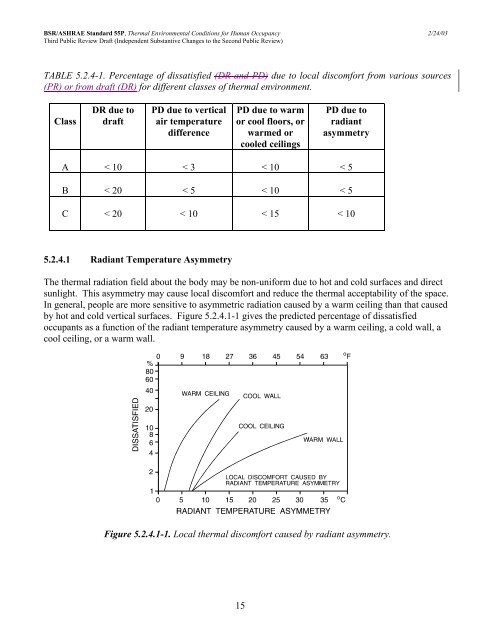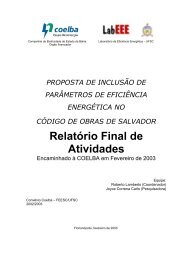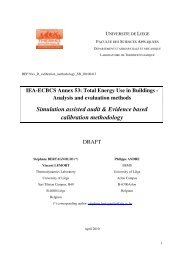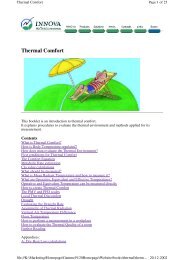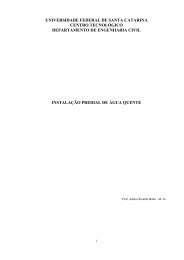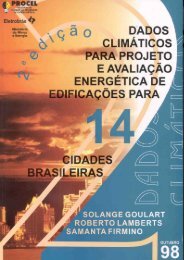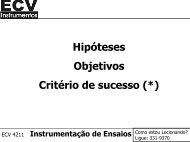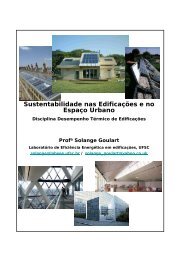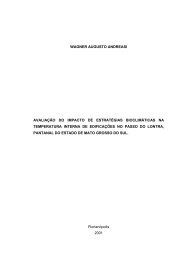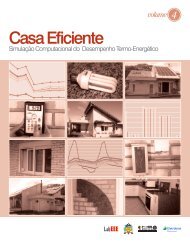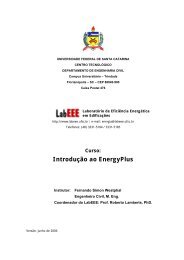ASHRAE STANDARD - 55R
ASHRAE STANDARD - 55R
ASHRAE STANDARD - 55R
Create successful ePaper yourself
Turn your PDF publications into a flip-book with our unique Google optimized e-Paper software.
BSR/<strong>ASHRAE</strong> Standard 55P, Thermal Environmental Conditions for Human Occupancy 2/24/03<br />
Third Public Review Draft (Independent Substantive Changes to the Second Public Review)<br />
TABLE 5.2.4-1. Percentage of dissatisfied (DR and PD) due to local discomfort from various sources<br />
(PR) or from draft (DR) for different classes of thermal environment.<br />
Class<br />
A<br />
B<br />
C<br />
DR due to<br />
draft<br />
< 10<br />
< 20<br />
< 20<br />
PD due to vertical<br />
air temperature<br />
difference<br />
< 3<br />
< 5<br />
< 10<br />
5.2.4.1 Radiant Temperature Asymmetry<br />
PD due to warm<br />
or cool floors, or<br />
warmed or<br />
cooled ceilings<br />
15<br />
< 10<br />
< 10<br />
PD due to<br />
radiant<br />
asymmetry<br />
The thermal radiation field about the body may be non-uniform due to hot and cold surfaces and direct<br />
sunlight. This asymmetry may cause local discomfort and reduce the thermal acceptability of the space.<br />
In general, people are more sensitive to asymmetric radiation caused by a warm ceiling than that caused<br />
by hot and cold vertical surfaces. Figure 5.2.4.1-1 gives the predicted percentage of dissatisfied<br />
occupants as a function of the radiant temperature asymmetry caused by a warm ceiling, a cold wall, a<br />
cool ceiling, or a warm wall.<br />
< 15<br />
< 5<br />
< 5<br />
< 10<br />
Figure 5.2.4.1-1. Local thermal discomfort caused by radiant asymmetry.


